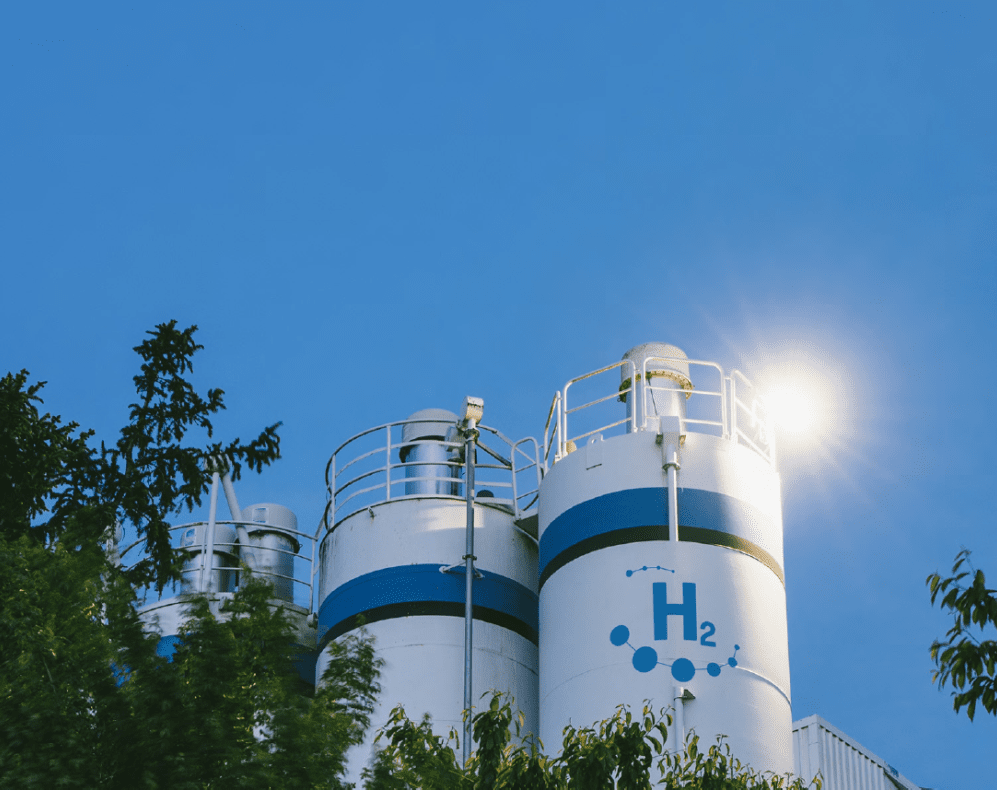1 August 2022
The starting point of the hydrogen economy
by Simon Marshall
As the world shifts its energy strategy away from a reliance on fossil fuels, hydrogen is being heralded as the clean and plentiful alternative fuel of the future.
Undoubtedly, hydrogen has the potential to be of significant value in addressing climate change. It is the most energy-dense fuel available, at 120–142MJ/kg compared to natural gas at 40- 45MJ/kg. At the point of use, hydrogen burns with no carbon or other harmful emissions, and it can be used as an energy store, carrier and fuel supply.
But despite being the most abundant element in the universe, hydrogen occurs rarely in its elemental form on earth. Instead, it is commonly found in compounds such as water (combined with oxygen) and fossil fuels (combined with carbon). This means that hydrogen must be separated prior to final use, which can be both energy-intensive and damaging to the environment.
Energy-intensive extraction
Achieving ‘clean’ extraction of hydrogen from its compound forms in industrial volumes is one of the many challenges which are key to the creation of a carbon-free, hydrogen-powered economy.
Today, hydrogen is used globally in many industrial processes, and three major groups of technologies are available for its production at a commercial scale:
- THERMOCHEMICAL – including steam methane reforming and coal gasification
- ELECTROLYTIC – including alkaline, proton exchange membrane and solid oxide techniques.
- BIOLOGICAL – including microbial biomass and synthetic photosynthesis techniques.
Thermochemical separation
These processes have been established for nearly 100 years and represent approximately 95% of current worldwide hydrogen production. Most of the installed capacity is based on the steam reformation of natural gas, although coal gasification is also used in many parts of the world.
The reformation process is very energy-intensive and entails reacting natural gas with steam at high temperatures over a catalyst. Use of hydrocarbon fuels results in high levels of CO2 emissions. The process consumes a great deal of energy too, with an energy efficiency in the order of 70%
(percentage of energy in final product vs energy of fuels used in production).
As thermochemical is such a ‘dirty’ process, significant investment is required to retrofit production facilities with equipment to minimise CO2 release. Measures under development include carbon capture and sequestration, which can reduce the carbon intensity of the process by between 5% and 90%. However, such mitigation incurs an additional efficiency-cost and, whilst emissions are prevented, the captured waste CO2 must then be transported and stored for later disposal.
Electrolytic processes
These use electricity to break down water into its hydrogen and oxygen components. There are three main types of electrolyser used: alkaline, solid oxide and proton exchange membrane. Electrolysis is a well-established technology and, after thermochemical, accounts for most of the remaining hydrogen production (approximately 5%). Its energy efficiency is greater than that of thermochemical processes, at 85%-90%.
Alkaline electrolysers are the most common and use a combination of alkaline electrolyte solution and water. Hydrogen is produced in a cell that comprises an anode, cathode and diaphragm, typically with cells arranged in stacks. When electrical current is applied to the cell, hydroxide ions move through the electrolyte and hydrogen bubbles are generated on the cathode. The more cells in the stack, the more hydrogen is produced.
Proton exchange membrane (PEM) electrolysers use a solid polymer electrolyte that forms a membrane between the anode and cathode. As current is applied to the cell, hydrogen protons pass through the membrane and collect on the cathode, whilst oxygen accumulates on the anode. PEM technologies are less common but are developing quickly.
Solid oxide electrolysers use electrolytes composed of solid, ceramic material and operate at much higher temperatures than other electrolysers (ie above 500˚C). When steam is fed to the cathode and current applied, the electrolyte is reduced to produce pure hydrogen and oxygen ions. The oxygen ions pass through the solid electrolyte and are oxidised at the anode to form pure oxygen gas.
Electrolytic hydrogen production is also energy-intensive but, if achieved using a fully renewable electricity supply, it can be considered a zero-carbon energy source.
Biological production
These processes include microbial biomass fermentation and photobiological techniques. Fermentation systems use microbial bacteria to break down organic matter such as sewage, straw and other biomass sources to produce hydrogen by direct fermentation. Photobiological processes use micro-organisms and sunlight to split water into oxygen and hydrogen.
Whilst these newly developed biological production techniques are very much in their infancy, they are much more energy-efficient and climate-friendly when compared to more established thermochemical and electrolytic hydrogen production processes.
New technologies, new risks
Hydrogen is abundant, energy-rich and clean-burning. But while it promises huge potential as part of our future green energy mix, most current hydrogen extraction processes are energy-intensive and polluting at industrial scale.
Making existing separation processes more environment-friendly and upscaling nascent separation technologies will require the development of new materials, techniques and equipment. This will introduce more variability and risk into a fast-expanding hydrogen economy. Is the insurance market fully prepared for this new sector of risk and uncertainty?
Only time will tell. We welcome your thoughts.
